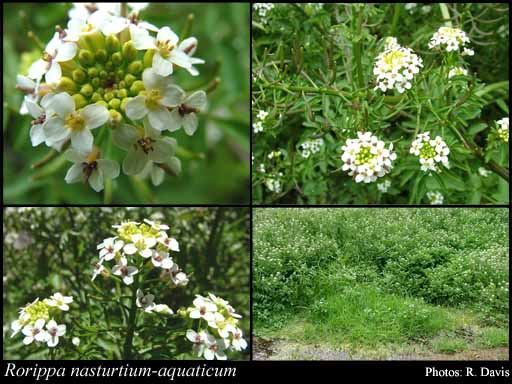- Reference
- Sched.Fl.Stiriac.Exsicc. 22 (1905)
- Conservation Code
- Not threatened
- Naturalised Status
- Alien to Western Australia
- Name Status
- Current
Decumbent, stoloniferous perennial, herb, to 0.3 m high, to 2.5 m long. Fl. white, Oct to Dec or Jan to Feb. Mud or shallow water. In winter-wet depressions & watercourses.

Distribution
- IBRA Regions
- Geraldton Sandplains, Jarrah Forest, Swan Coastal Plain, Warren.
- IBRA Subregions
- Geraldton Hills, Northern Jarrah Forest, Perth, Southern Jarrah Forest, Warren.
- IMCRA Regions
- Leeuwin-Naturaliste.
- Local Government Areas (LGAs)
- Albany, Augusta Margaret River, Bayswater, Bridgetown-Greenbushes, Bunbury, Gingin, Gosnells, Greater Geraldton, Harvey, Manjimup, Melville, Plantagenet, Rockingham, Stirling.
Management Notes (for the Swan NRM Region)
General Biology. Growth form. Herb. Life form. Perennial. Reproduction. This species reproduces by seed and vegetatively via stem segments..
Notes. Herbaceous plant that grows in water, with low-growing or semi-upright stems 10-80 cm long. Stems are green, hollow, hairless and often produce roots at their lower joints. Leaves (2-12 cm long) are either deeply-lobed or once-compound with 1-5 pairs of lobes or leaflets. The small flowers (4-10 mm across) are on stalks up to 10 mm long and are arranged in loose elongated clusters. The clusters each contain 10-25 flowers and elongate into fruit, up to 20 cm in length. Each flower has four small green sepals (2-3 mm long), four larger white petals (3-6 mm long), six stamens (2-3 mm long) and an ovary topped with a short style (0.5-1 mm long) and stigma. The straight or slightly curved fruit resemble small pods. The fruit (10-20 mm long and 2-2.5 mm wide) are hairless and cylindrical in shape with two rows of seeds on either side of a central division. The small seeds are rounded or egg-shaped and approximately 1 mm across..
Additional information. Origin. Native to Europe, the Azores, the Madeira Islands, the Canary Islands, northern Africa western Asia, Pakistan and western China.. History of use/introduction. Introduced for cultivation.. Similar exotic species. Rorippa microphylla, Rorippa palustris, Rorippa sylvestris.
Suggested method of management and control. Manual removal recommended for small populations. A non-selective compound glyphosate will provide some control but will harm other plant species if it comes in contact and in flowing water will not be effective. Glyphosate-isopropylamine has shown control of the species and studies have indicated that the product had no significant adverse effects on wildlife, fish and aquatic micro-organisms. Read the manufacturers' labels and material safety data sheets before using herbicides. For further information consult the Australian Pesticides and Veterinary Medicines Authority to determine the status of permits for your situation or state.
References
- Cao, L, and L. Berent (2019) Nasturtium officinale. W.T. Aiton: U.S. Geological Survey, Nonindigenous Aquatic Species Database, and NOAA Great Lakes Aquatic Nonindigenous Species Information System,, Gainesville, FL, & Ann Arbor, MI. URL: https://nas.er.usgs.gov/queries/greatlakes/FactSheet.aspx?SpeciesID=229&Potential=N&Type=0&HUCNumber=Dhuron - Accessed April 2019.
- Queensland Government (2016) Weeds of Australia. Identic Pty Ltd for Biosecurity Queensland URL: https://keyserver.lucidcentral.org/weeds/data/media/Html/rorippa_nasturtiumaquaticum.htm - Accessed April 2019.
- Seddon, J.C. (1981) The control of aquatic weeds with the isopropylamine salt of N-phosphonomethyl glycine. In Proceedings of the Conference on Aquatic Weeds and Their Control. : 141-148 12. Monsanto Ltd, Thames Tower, Burleys Way, Leicester, UK.